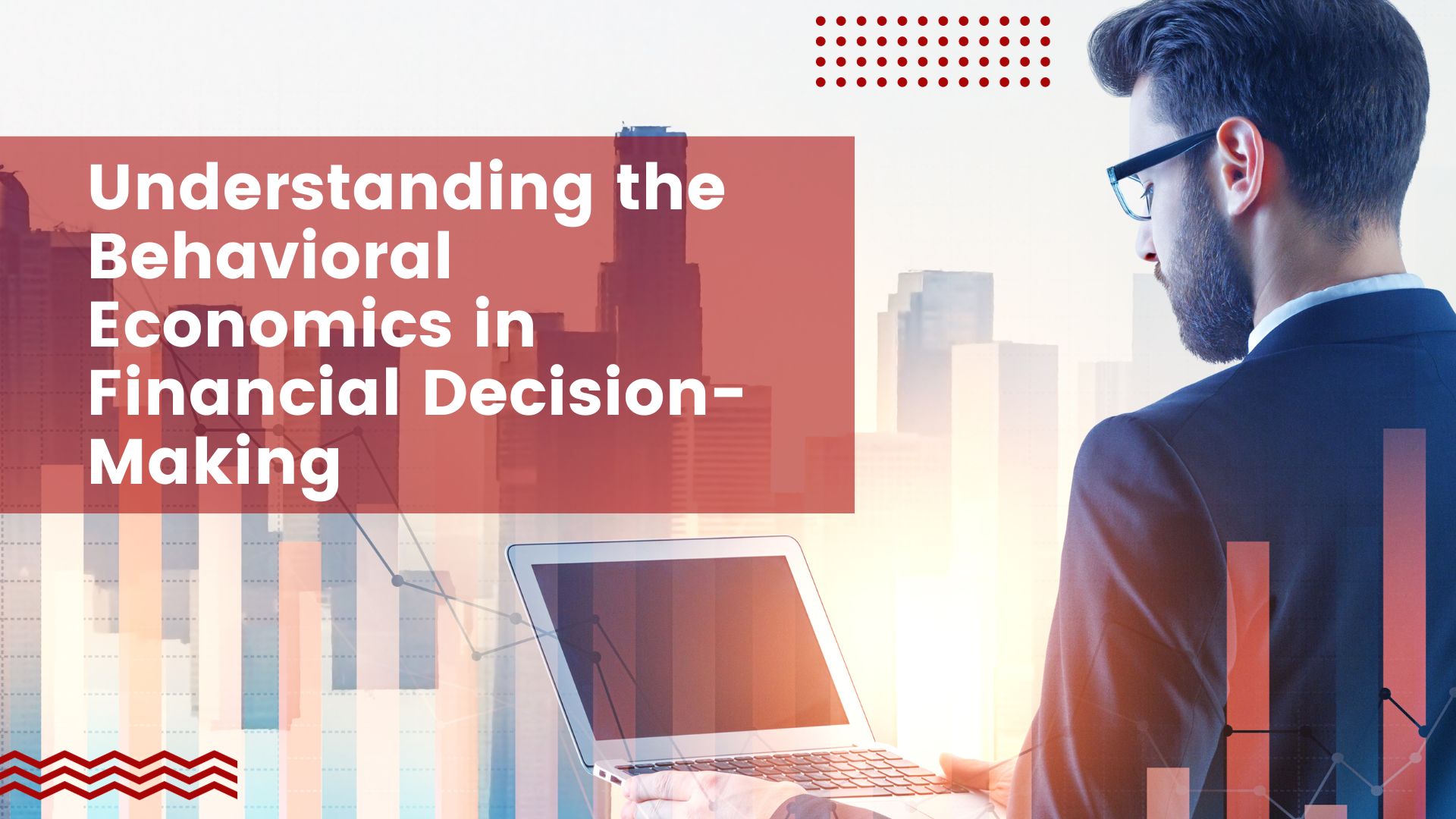
Financial decision-making is a complex interplay of rationality, emotions, and cognitive biases. Traditional economic theories have long assumed that individuals make decisions based on rational calculations, maximizing utility and minimizing costs. However, the field of behavioural economics challenges this assumption, recognizing the profound impact of psychological factors on financial choices. In this exploration, we delve into the fascinating realm of behavioural economics, examining how human behavior shapes financial decision-making and influences market dynamics.
Unveiling the Foundations of Behavioural Economics
Traditional Economics vs. Behavioural Economics
Traditional economics operates under the assumption of Homo economicus, a rational and utility-maximizing individual. However, behavioural economics introduces a more nuanced perspective, acknowledging that human decisions are often influenced by psychological and emotional factors. This shift in focus has profound implications for understanding financial markets and the behavior of market participants.
Core Principles of Behavioural Economics
- Bounded Rationality: Humans have cognitive limitations, processing only a limited amount of information at a time. Bounded rationality recognizes that decision-makers often rely on heuristics or rules of thumb to simplify complex choices.
- Loss Aversion: The pain of losses is psychologically more potent than the pleasure of equivalent gains. Loss aversion can lead individuals to make suboptimal decisions, avoiding risks even when potential gains outweigh potential losses.
- Present Bias: Individuals often prioritize immediate rewards over future gains, leading to impulsive decision-making. Present bias can impact savings, investments, and long-term financial planning.
- Overconfidence: Many individuals exhibit overconfidence in their abilities, leading them to underestimate risks and overestimate potential returns. Overconfidence can contribute to excessive trading and investment in high-risk assets.
- Herding Behavior: People tend to follow the crowd, especially in uncertain situations. Herding behavior can result in market bubbles and crashes as individuals mimic the actions of others rather than conducting independent analyses.
The Psychology of Financial Decision-Making
1. Loss Aversion and Investment Choices
Loss aversion plays a significant role in investment decisions. Investors may hold on to losing positions in the hope of recovering losses, even when a rational analysis suggests it might be wiser to cut losses and reallocate capital. Understanding the psychological impact of losses is crucial for financial advisors and policymakers seeking to guide investors towards more rational decision-making.
2. Behavioural Biases in Stock Market Participation
Individuals often exhibit biases that impact their participation in the stock market. Overconfidence can lead some to believe they can outperform the market consistently, while others may succumb to fear and avoid market participation altogether. Behavioural biases contribute to the observed patterns of overtrading and undertrading in financial markets.
3. Emotional Influences on Investment Timing
Emotions, such as fear and greed, can heavily influence investment timing. During market downturns, fear may drive individuals to sell assets at low prices, fearing further losses. Conversely, periods of exuberance and optimism may lead to buying assets at inflated prices. Recognizing and managing emotional influences is critical for maintaining a balanced and rational investment strategy.
4. Cognitive Biases in Financial Planning
Cognitive biases, such as confirmation bias (favoring information that confirms pre-existing beliefs) and anchoring (relying too heavily on the first piece of information encountered), can impact financial planning. Investors may selectively seek information that aligns with their views, leading to suboptimal decision-making. Financial advisors must be attuned to these biases to provide effective guidance.
The Behavioural Economics Toolkit: Tools for Better Decision-Making
1. Nudges and Choice Architecture
Nudges, a concept popularized by behavioural economist Richard Thaler, involve designing choices to guide individuals toward more desirable outcomes without restricting their freedom of choice. Choice architecture refers to the way choices are presented. By structuring decisions effectively, policymakers and institutions can influence better financial choices without imposing strict regulations.
2. Incentives and Decision Framing
Understanding how incentives impact behavior is crucial in designing effective policies and interventions. Decision framing, presenting information in a way that emphasizes potential gains or losses, can influence choices. By aligning incentives with desired outcomes and framing choices strategically, policymakers can encourage individuals to make more rational financial decisions.
3. Financial Education and Awareness Campaigns
Empowering individuals with financial knowledge is a potent tool in mitigating behavioural biases. Financial education programs and awareness campaigns can enhance individuals’ understanding of common pitfalls, fostering a more informed and rational approach to financial decision-making.
4. Technology and Behavioural Finance Apps
Advancements in technology have given rise to behavioural finance apps designed to nudge users toward better financial habits. These apps leverage insights from behavioural economics to encourage savings, responsible spending, and informed investment decisions.
Behavioural Economics in Policy and Regulation
1. Regulatory Interventions
Regulators increasingly incorporate insights from behavioural economics into their frameworks. For example, disclosure requirements are designed considering individuals’ tendency to neglect information. Regulatory interventions informed by behavioural economics aim to protect consumers and ensure fair and transparent financial markets.
2. Retirement Savings and Default Options
In the realm of retirement savings, behavioural economics has influenced the design of default options in retirement plans. Opt-out enrollment and automatic contribution escalation leverage inertia to encourage individuals to save for retirement, recognizing that many may procrastinate or feel overwhelmed by complex choices.
3. Consumer Protection and Financial Products
Understanding how individuals make financial decisions is vital for consumer protection. Regulations related to financial products, such as mortgages and credit cards, are crafted with awareness of potential pitfalls and biases. Clear and transparent communication is emphasized to ensure individuals fully comprehend the terms and implications of financial products.
Challenges and Future Directions
1. Ethical Considerations
The use of behavioural economics in shaping financial decisions raises ethical considerations. While nudges can lead to positive outcomes, questions arise about the ethical boundaries of influencing individuals’ choices, especially when personal autonomy is at stake.
2. Cultural Variations in Decision-Making
Behavioural economics research often originates in Western contexts, raising questions about the generalizability of findings across diverse cultures. Cultural variations in decision-making must be considered to ensure that interventions and policies are effective across different populations.
3. Integration with Traditional Economic Models
The integration of behavioural economics with traditional economic models remains a dynamic area of exploration. Balancing the insights from behavioural economics with the foundational principles of classical economics is essential for a comprehensive understanding of economic behavior.
Conclusion: Bridging the Gap Between Psychology and Finance
In the intricate dance of financial decision-making, behavioural economics serves as a guiding light, illuminating the subtle and often irrational factors that influence choices. Recognizing the psychological intricacies of individuals navigating the financial landscape is paramount for policymakers, financial institutions, and individuals alike. As we continue to unravel the mysteries of human behavior in finance, the synthesis of insights from behavioural economics and traditional economic models holds the key to fostering a more informed, resilient, and rational approach to financial decision-making.




